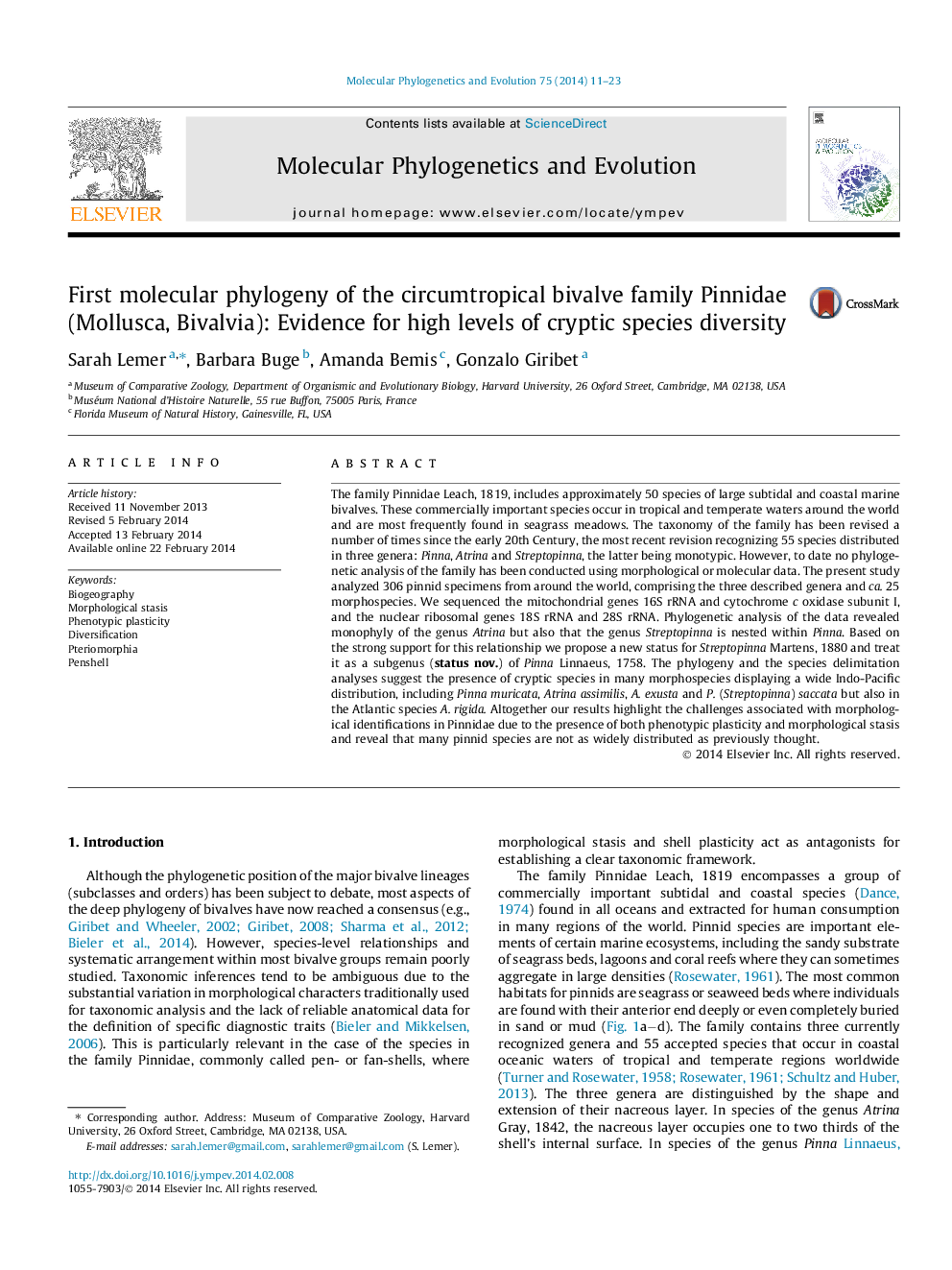| Article ID | Journal | Published Year | Pages | File Type |
|---|---|---|---|---|
| 5919549 | Molecular Phylogenetics and Evolution | 2014 | 13 Pages |
•We constructed the first phylogeny of the family Pinnidae using molecular data from 4 genes.•306 specimens, representing 25 morphospecies, and the three recognized genera were analyzed.•The genus Streptopinna appears nested inside Pinna, and thus is given a new subgeneric status.•Most morphospecies with wide Indo-Pacific distributions account for multiple cryptic species.•Species delimitation analyses suggest 31 species for the 25 sampled morphospecies.
The family Pinnidae Leach, 1819, includes approximately 50 species of large subtidal and coastal marine bivalves. These commercially important species occur in tropical and temperate waters around the world and are most frequently found in seagrass meadows. The taxonomy of the family has been revised a number of times since the early 20th Century, the most recent revision recognizing 55 species distributed in three genera: Pinna, Atrina and Streptopinna, the latter being monotypic. However, to date no phylogenetic analysis of the family has been conducted using morphological or molecular data. The present study analyzed 306 pinnid specimens from around the world, comprising the three described genera and ca. 25 morphospecies. We sequenced the mitochondrial genes 16S rRNA and cytochrome c oxidase subunit I, and the nuclear ribosomal genes 18S rRNA and 28S rRNA. Phylogenetic analysis of the data revealed monophyly of the genus Atrina but also that the genus Streptopinna is nested within Pinna. Based on the strong support for this relationship we propose a new status for Streptopinna Martens, 1880 and treat it as a subgenus (status nov.) of Pinna Linnaeus, 1758. The phylogeny and the species delimitation analyses suggest the presence of cryptic species in many morphospecies displaying a wide Indo-Pacific distribution, including Pinna muricata, Atrina assimilis, A. exusta and P. (Streptopinna) saccata but also in the Atlantic species A. rigida. Altogether our results highlight the challenges associated with morphological identifications in Pinnidae due to the presence of both phenotypic plasticity and morphological stasis and reveal that many pinnid species are not as widely distributed as previously thought.
Graphical abstractFigure optionsDownload full-size imageDownload as PowerPoint slide
